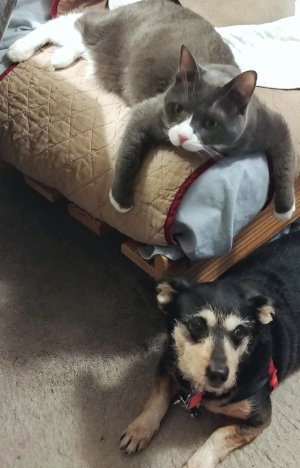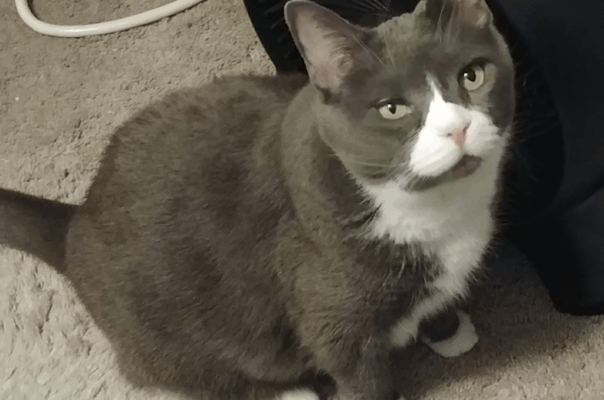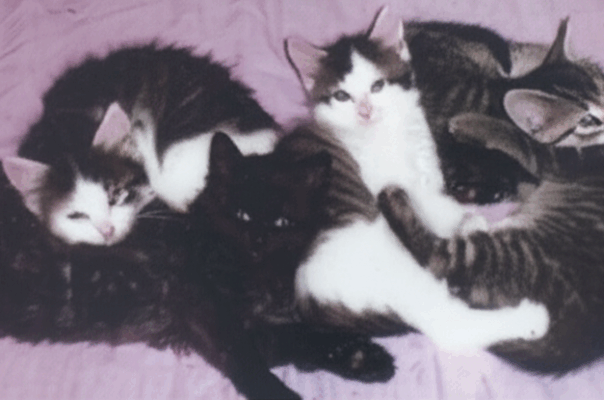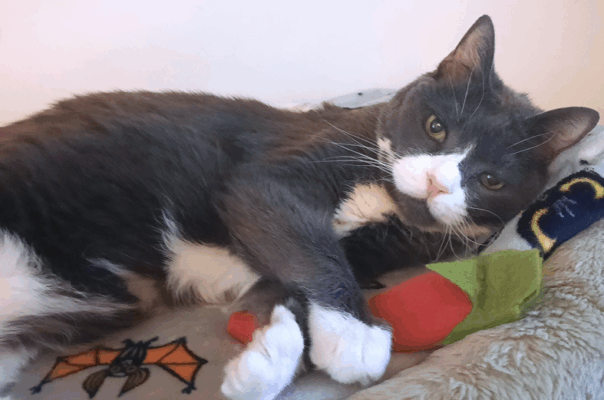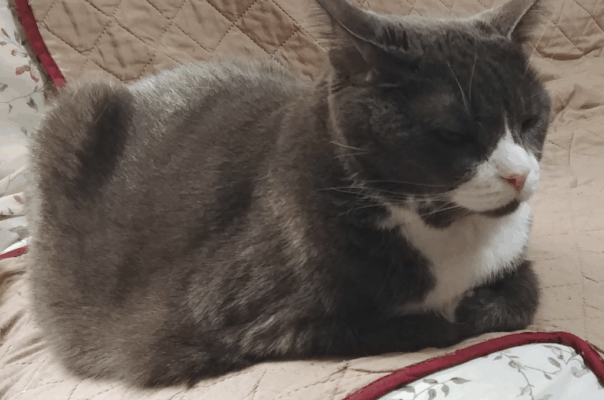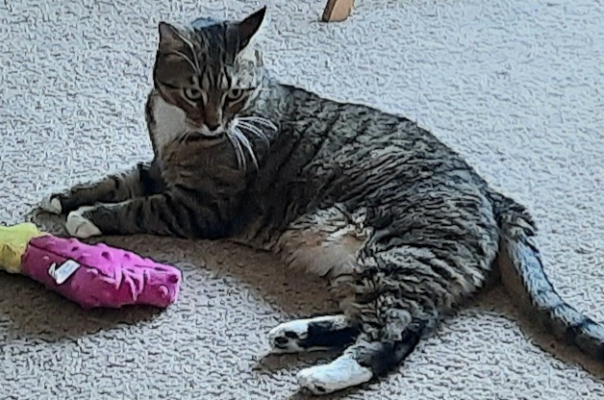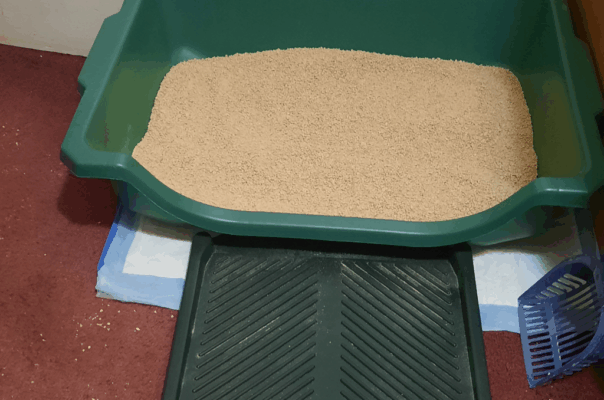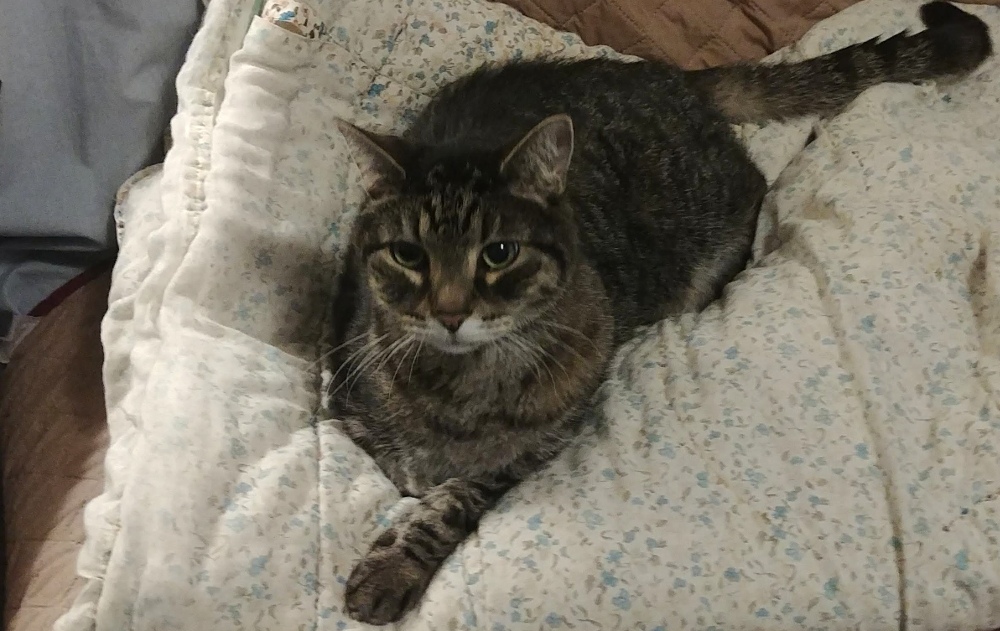BellenPaws.com supports a number of initiatives for animals and pets. We’ve selected a few here that are close to our heart and ambitiously possible. We hope to bring awareness to these issues and inform others. Please help spread the word on these important issues through social media and conversation with friends and family.
Senior Pets
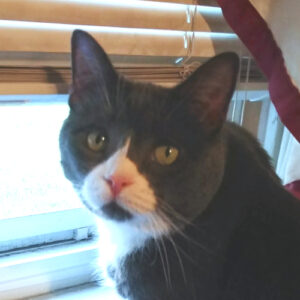 Senior Pets hold a special place in our hearts and advocacy efforts. Just like people, animals enter their “senior” years and face new challenges that their younger selves didn’t encounter. All your senior pet needs is your awareness of their changing conditions and the same compassion you’d show any family member experiencing similar age-related issues. The approach is simple—treat your pet as family, because that’s exactly what they are.
Senior Pets hold a special place in our hearts and advocacy efforts. Just like people, animals enter their “senior” years and face new challenges that their younger selves didn’t encounter. All your senior pet needs is your awareness of their changing conditions and the same compassion you’d show any family member experiencing similar age-related issues. The approach is simple—treat your pet as family, because that’s exactly what they are.
As pets age, they may require daily monitoring, care, or medication. They might develop thyroid conditions, joint problems requiring pain management, feline diabetes, or mobility issues necessitating assistive devices and special accommodations—much like elderly humans.
The challenges are too numerous to list, yet too many people surrender their aging pets to shelters or rescues, transferring responsibility to others. Even worse, some owners euthanize their pets based on a veterinarian’s assessment that “they’re old and will only get worse.” We’ve heard this firsthand and can honestly say, “No, they didn’t get worse” and “You were wrong.”
Your pet depends on you to maintain their quality of life throughout their senior years, just as you would for any family member. This is the care we strongly advocate for.
Pet Owner Education
 Pet owner education is rarely emphasized enough in our society, yet it deserves to be addressed, stressed, and prioritized. Though we consider ourselves knowledgeable pet owners, we research every new issue affecting our pets and invariably learn something new each time. Simply put, there is always more to discover about your pet’s needs and care.
Pet owner education is rarely emphasized enough in our society, yet it deserves to be addressed, stressed, and prioritized. Though we consider ourselves knowledgeable pet owners, we research every new issue affecting our pets and invariably learn something new each time. Simply put, there is always more to discover about your pet’s needs and care.
In our experience, we’ve encountered too many pet owners who remain uninformed about their animals’ care, diet, or common pet issues. For instance, understanding what your pet can and cannot safely consume is crucial knowledge that many people lack. Do you know whether your pet can eat grapes, chocolate, or onions? Are you aware that even onion residue from pizza crust can be harmful? Can you identify the hidden toxins in those table scraps you’re feeding to your companions?
If you don’t know these answers regarding your own pet, you should. It’s also important to recognize that cats and dogs often have different dietary restrictions—what’s harmless for one species may be dangerous for the other. Take responsibility for your education through YouTube videos, Wikipedia articles, pet blogs, and books—yes, those printed resources we sometimes forget still exist.
Spay and Neutering
We strongly advocate for spaying and neutering pets. Pet overpopulation is a serious issue—if it weren’t, shelters wouldn’t need to euthanize animals to make room for newcomers. If you have a pet, please take responsibility for having them spayed or neutered.
While your veterinarian can perform these procedures, the costs can be substantial. Fortunately, more affordable alternatives exist. Many programs and clinics specialize in spay and neuter services at reduced rates, allowing you to maintain your relationship with your regular vet for other care.
To find these cost-effective services, reach out to local shelters and specialized clinics. The ASPCA is an excellent starting point. Rescue organizations typically maintain lists of providers offering discounted procedures. Remember, you’re not limited to your primary veterinarian, which may be particularly important if cost is a concern.
Bans on Retail Pet Sales
We firmly believe in adopting rather than buying pets, and we support bans on all retail pet sales. While terms like “puppy mills” and “kitty mills” are commonly used, they carry negative connotations that specifically suggest animal abuse or harm. Although we certainly oppose such abusive operations, our concern extends to all commercial breeding of pets—a broader term that doesn’t necessarily imply cruelty but encompasses the entire industry of breeding animals for profit. In our view, these commercial breeding operations, regardless of their conditions, have no place in our society.
Bans on Declawing of Cats
The decision to welcome a feline into your family sometimes comes with questions about declawing. This procedure typically involves removing a cat’s front claws, though sometimes includes all four paws, and must be performed by a qualified veterinarian.
The Humane Society offers an informative resource on declawing cats. Their stark description stands out: “If performed on a human being, declawing would be like cutting off each finger at the last knuckle.” While some defenders cite modern laser techniques to minimize the impact, such arguments miss the fundamental issue. I wouldn’t want this procedure performed on me, which makes it difficult to justify doing it to a cat.
This concern extends to alternative procedures like tendonectomy—surgery that prevents cats from extending their claws to scratch. In my opinion, cats deserve to keep their claws intact. If furniture protection is your concern, several humane alternatives exist. Both Belle and Paws exhibit side effects from having been declawed in their previous home.
Pet Adoption
Our position on retail pet sales is straightforward: If retail stores sourced their animals from rescues or shelters, our stance might be different. However, most pet stores obtain their animals from commercial breeders. These retailers could easily partner with rescue shelters or foster organizations but instead choose to support a market that commodifies animals.
There are countless reasons to adopt a pet, with providing unconditional love at the top of the list—and, of course, saving a life.
Adopt a pet, don’t shop for one is more than just a catchphrase. Consider this: Do you normally shop for your family members? What about your friends?
 Paws, Zippy, Rascal, and Belle in the tube.
Paws, Zippy, Rascal, and Belle in the tube.
 Belle and Paws were the inspiration behind this sanctuary for senior pet stories, informative posts, online tools, and experience related pages. Rescued at 12 years old, these remarkable cats brought immeasurable joy and love to our lives for a further 8 years until they were 20 years old. Though we said goodbye to Paws in August 2023 and Belle in May 2024, their spirits continue to guide our mission here. The tender purrs, knowing gazes, and gentle companionship they offered taught us that a pet’s golden years can be their most precious. Our hearts still ache with both their absence, but we find comfort in sharing their legacy here for our visitors.
Belle and Paws were the inspiration behind this sanctuary for senior pet stories, informative posts, online tools, and experience related pages. Rescued at 12 years old, these remarkable cats brought immeasurable joy and love to our lives for a further 8 years until they were 20 years old. Though we said goodbye to Paws in August 2023 and Belle in May 2024, their spirits continue to guide our mission here. The tender purrs, knowing gazes, and gentle companionship they offered taught us that a pet’s golden years can be their most precious. Our hearts still ache with both their absence, but we find comfort in sharing their legacy here for our visitors.





